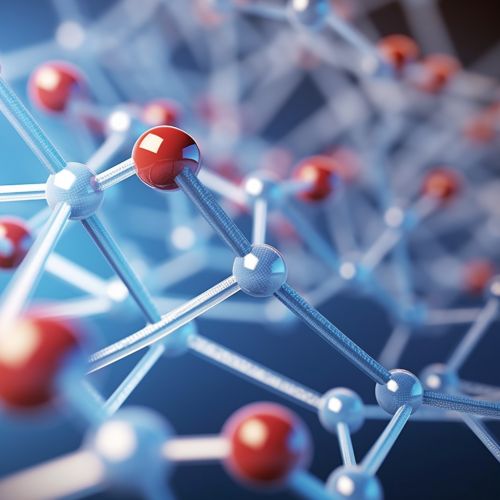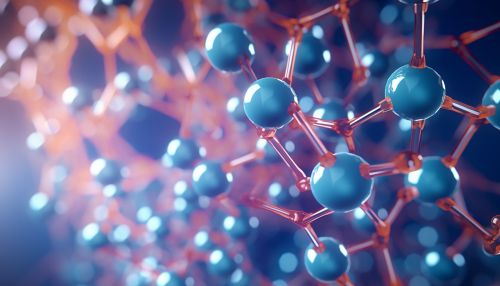Ligand
Overview
A ligand is a substance that forms a complex with a biomolecule to serve a biological purpose. In protein-ligand binding, the ligand is usually a molecule which produces a signal by binding to a site on a target protein. The binding typically results in a change of conformational isomerism (conformation) of the target protein. Ligand binding influences the protein's ability to perform its function and is often essential for its function.
Classification
Ligands are classified based on their size, charge, and the type of bond they form with the central atom.
Size
Ligands can be classified as small or large based on their size. Small ligands are typically ions or molecules that bind to a single site on the protein. Large ligands, on the other hand, are usually macromolecules that can bind to multiple sites on the protein.
Charge
Ligands can also be classified based on their charge. Positively charged ligands are known as cationic ligands, negatively charged ligands are known as anionic ligands, and uncharged ligands are known as neutral ligands.
Type of Bond
The type of bond formed between the ligand and the central atom can also be used to classify ligands. There are two main types of bonds: covalent bonds and non-covalent bonds. Covalent ligands form a covalent bond with the central atom, while non-covalent ligands form other types of bonds, such as ionic bonds or hydrogen bonds.


Ligand Binding
Ligand binding is a critical aspect of biological function and is often involved in the function of proteins. The binding of a ligand to a protein can influence the protein's ability to perform its function. For example, the binding of a ligand to an enzyme can increase or decrease the enzyme's activity, while the binding of a ligand to a receptor can activate or inhibit the receptor's function.
Mechanisms of Ligand Binding
There are several mechanisms through which ligands can bind to proteins. These include:
1. Covalent bonding: This is a strong form of binding where the ligand and protein share electrons.
2. Hydrogen bonding: This is a weaker form of binding where the ligand forms a bond with a protein through a hydrogen atom.
3. Van der Waals forces: These are weak attractions between the ligand and protein that occur when the molecules are very close together.
4. Ionic bonding: This occurs when the ligand and protein have opposite charges and are attracted to each other.
5. Hydrophobic interactions: These occur when the ligand and protein are both non-polar and are attracted to each other due to their mutual dislike of water.
Ligand-Protein Interactions
The interaction between a ligand and a protein can be studied using various techniques, such as X-ray crystallography, nuclear magnetic resonance (NMR), and surface plasmon resonance (SPR). These techniques can provide information about the structure of the protein-ligand complex, the binding affinity of the ligand for the protein, and the kinetics of ligand binding and unbinding.
Applications
Ligands have various applications in biological research and medicine. They can be used as drugs to modulate the function of proteins in the body. For example, many drugs work by binding to receptors and either activating or inhibiting their function. Ligands can also be used in research to study the function of proteins and to develop new drugs.
